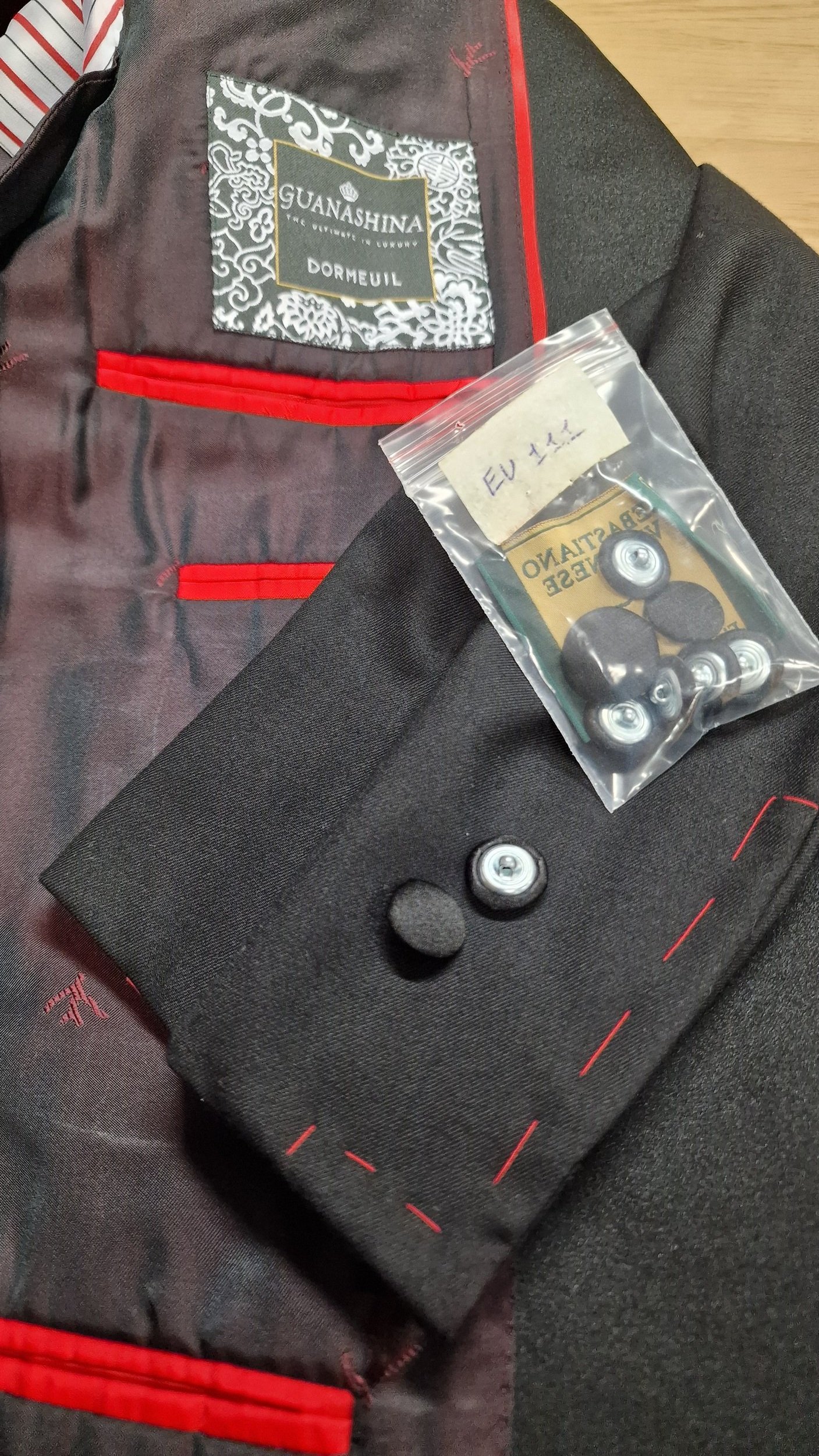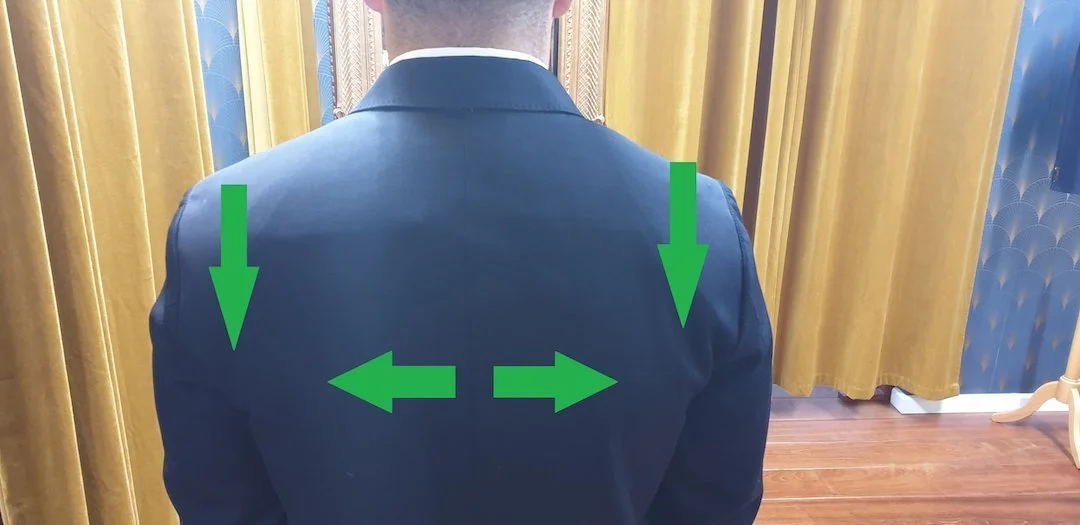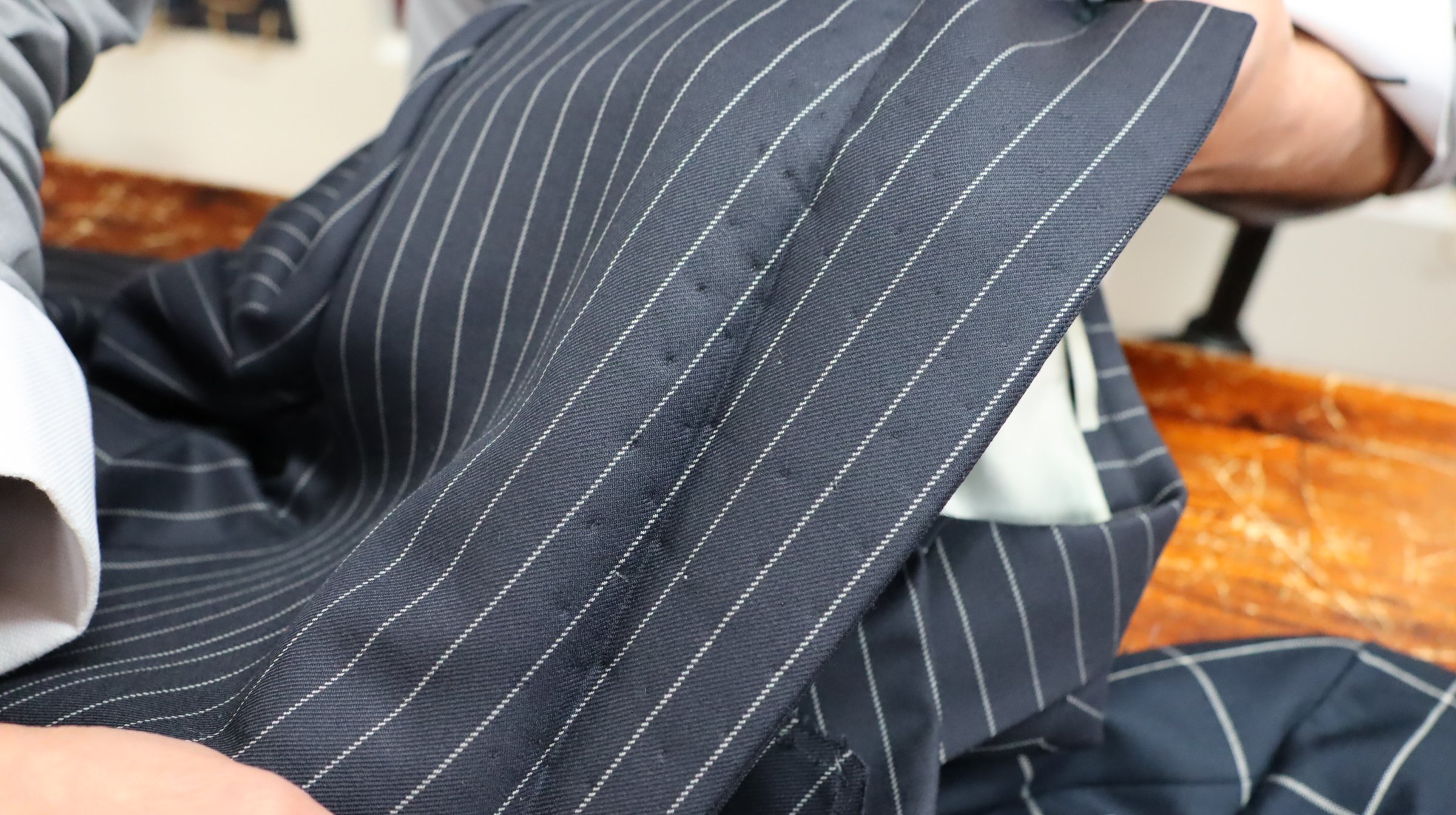The steps to make working buttonholes
1. Planning and Measurement
Identify the Location: Decide on the placement of the buttonholes (typically four), spaced about 2.5 to 3 cm apart, starting around 2.5 cm from the bottom of the sleeve. This precision ensures that the customisation integrates seamlessly with the jacket's elegant design.
Mark the Buttonholes: Use fabric chalk or a marker to accurately mark where the buttonholes will be positioned, ensuring they are perfectly aligned and evenly spaced for a harmonious appearance.
2. Preparing the Buttonholes
Reinforce the Area: Iron a small piece of interfacing on the wrong side of the sleeve at the marked locations to give the fabric additional strength, a step that is particularly crucial when working with high-end materials like Dormeuil Guanashina.
Cutting the Buttonholes: Employ a sharp pair of scissors or a buttonhole cutter to make precise slits for each buttonhole, executing with care to maintain the integrity of the fabric.
3. Sewing the Buttonholes
Hand Sewing: This meticulous process involves using a buttonhole stitch to encase each slit neatly, an approach that demands a steady hand and an eye for detail, reflecting the tailor's adept skill.
Machine Sewing: For those with access to a sewing machine equipped with a buttonhole feature, select the appropriate size and stitch for the fabric. Follow the machine’s guidance carefully to ensure each buttonhole is crafted to perfection.
4. Finishing Touches
Sewing the Buttons: Position the custom-made fabric-covered buttons on the opposite sleeve placket, aligning them with the buttonholes. Hand-sew each button securely, an emblem of the garment's bespoke nature.
Tips for Success
Practice Makes Perfect: Especially when working with luxurious fabrics, it’s prudent to practise on similar material scraps to perfect the technique.
Select the Right Tools: A sharp buttonhole cutter is indispensable for clean cuts, and a buttonhole foot can greatly enhance sewing accuracy.
Patience is Key: The creation of working buttonholes on such a refined garment cannot be hurried. Dedicate the necessary time to each step for impeccable results.











